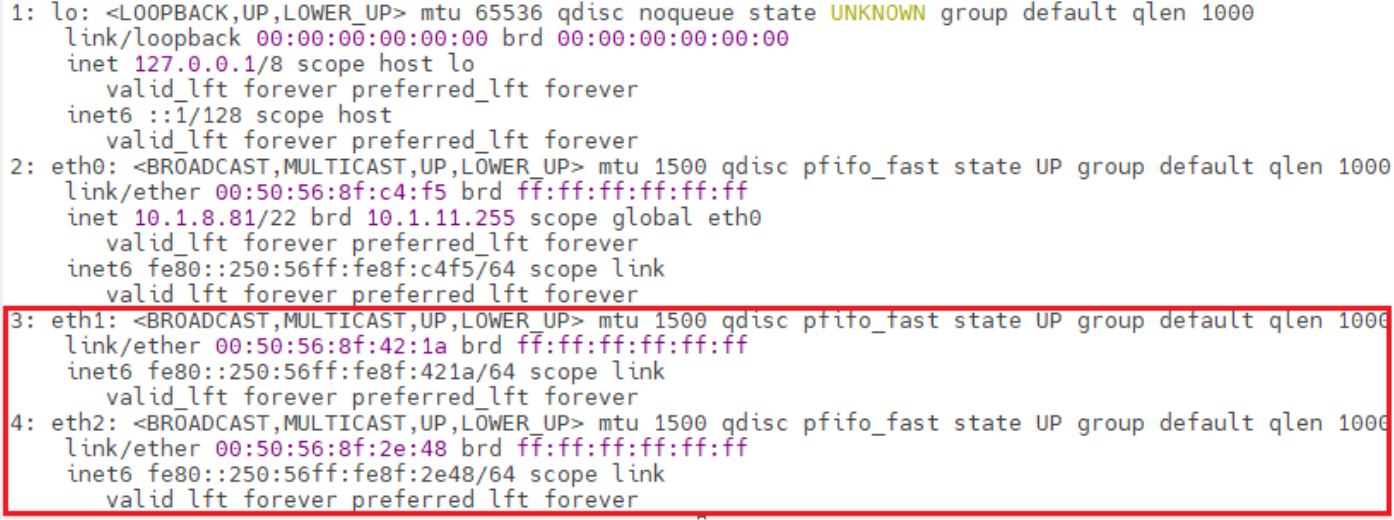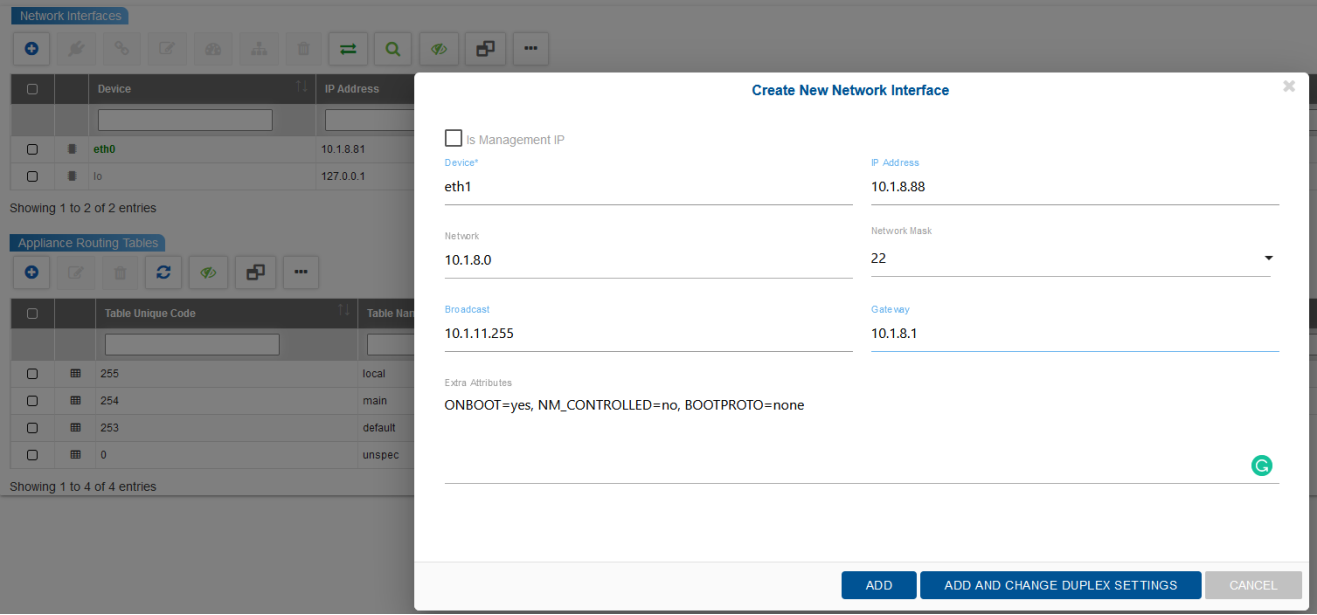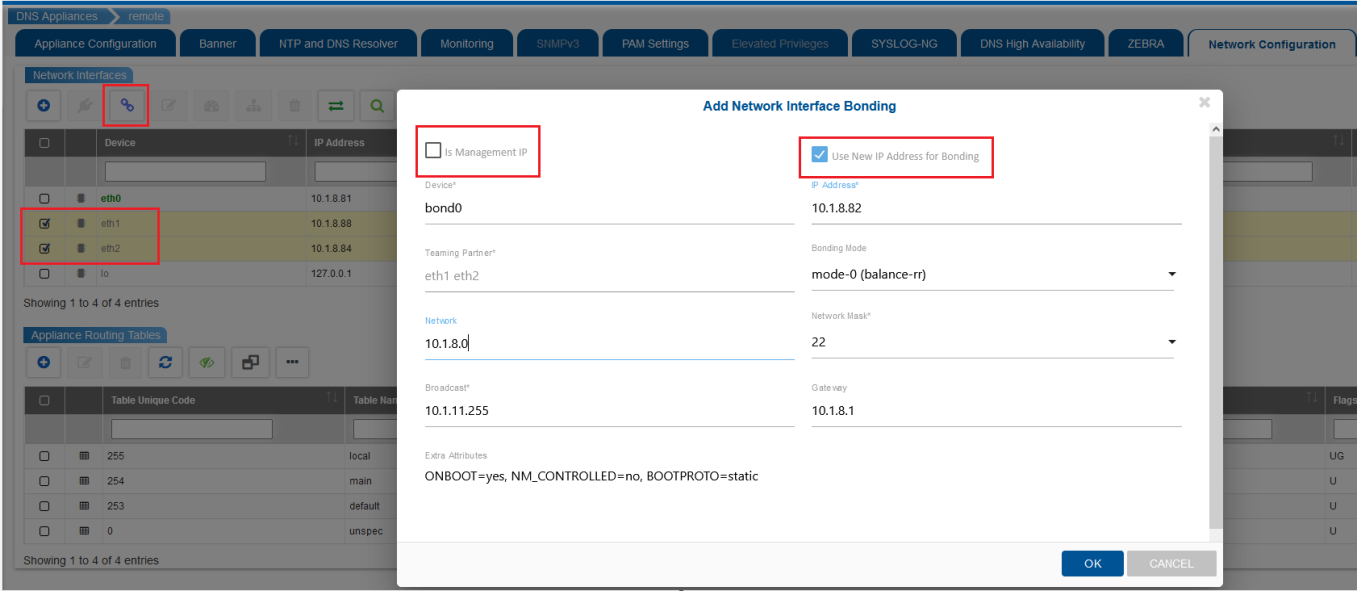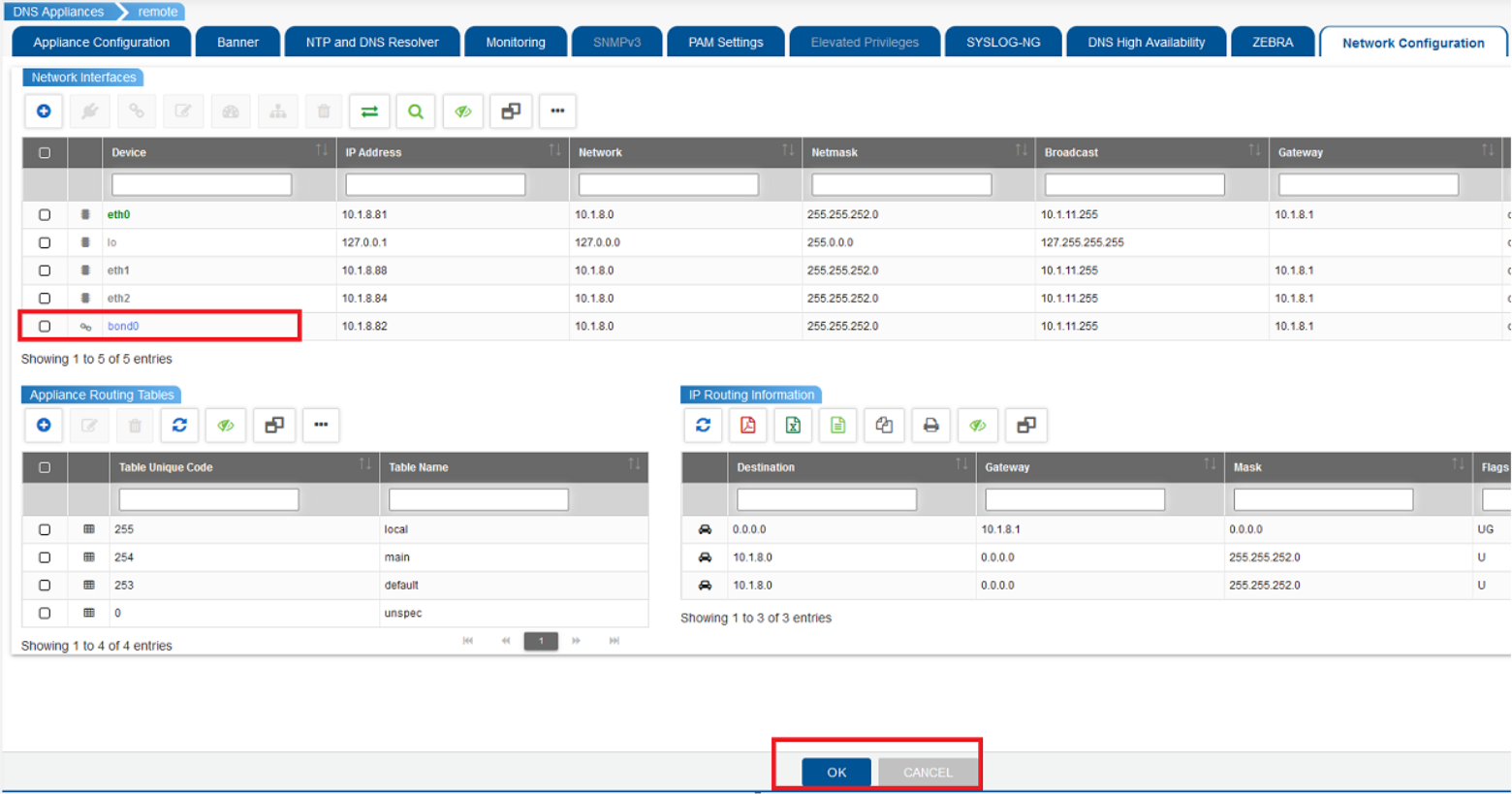
In the modern world of technology, service continuity and network redundancy are necessary. Therefore, keeping the core network services like DNS and DHCP up and running is extremely important. To make that happen NIC bonding, or teaming can be used.
Network bonding is a method of combining or joining two or more network interfaces into a single interface. It offers enhancements and redundancy by increasing the network throughput and bandwidth. If one interface is down or disconnected, the other one will work. It can be used when you need fault tolerance, redundancy, or load balancing networks. In Linux, a particular kernel module named bonding connects multiple network interfaces into a single interface. Two or more network interfaces can be combined into a specific logical “bonded” interface. The conduct of the bonded interfaces depends on the type of bonding method used.
In NIC bonding, different parameters need to be defined, such as mode and extra attributes.
|
Mode |
Policy |
Description |
Fault Tolerance |
Load balancing |
|
0 |
Round Robin |
In this mode, the packets are sequentially transferred or received through each interface one by one. |
No |
Yes |
|
1 |
Active Backup |
In this mode, one NIC is active and the other NIC is inactive. If the active NIC goes down, the other NIC becomes active. This mode is supported in x86 environments. |
Yes |
No |
|
2 |
XOR [exclusive OR] |
In this mode, the MAC address of the slave NIC is matched up against the incoming request’s MAC. Once the system establishes the connection, the same NIC is used to transmit or receive for the destination MAC. |
Yes |
Yes |
|
3 |
Broadcast |
In this mode, all the transmissions are sent on all slaves |
Yes |
No |
|
4 |
Dynamic Link Aggregation |
In this mode, the aggregated NICs act as one NIC which results in higher throughput, but also provides failover in the case that a NIC fails.
Dynamic Link Aggregation requires a switch that supports IEEE 802.3ad. |
Yes |
Yes |
|
5 |
Transmit Load Balancing (TLB) |
In this mode, the outgoing traffic is distributed depending on the current load on each slave interface.
Incoming traffic is received by the current slave. If the receiving slave fails, then the other slave takes over the MAC address of the failed slave. |
Yes |
Yes |
|
6 |
Adaptive Load Balancing (ALB) |
Unlike Dynamic Link Aggregation, Adaptive Load Balancing does not require any particular switch configuration.
Adaptive Load Balancing is only supported in x86 environments. The receiving packets are load-balanced through ARP negotiation. |
Yes |
Yes |
In the network interface configuration, the following parameters need to be defined:
To configure the NIC bonding on TCPWave appliances, the network administrators must enable additional interfaces. By default, a TCPWave appliance has eth0 as its management interface. Users can configure additional NICs from the TCPWave IPAM GUI.
Note: Ensure the interfaces are connected to switch ports in the case of hardware appliances. In the case of VM, ensure the required interfaces are added to the VM in the Virtual environment.

To configure NIC from the GUI:




Network resiliency is an extremely critical component to accommodate for while planning a robust and fault-tolerant DDI ecosystem. Provisioning an additional layer of resiliency at the network connectivity level by clubbing two physical interfaces into a bonded interface will eliminate a disruption caused due to a bad network port, a bad cable, a switch failure, etc. The seamless integration and the ease of use, that’s engineered in the core TCPWave IPAM makes it a relatively simple task to perform engineering with perfection. To learn more about NIC configuration, contact the TCPWave Sales Team.